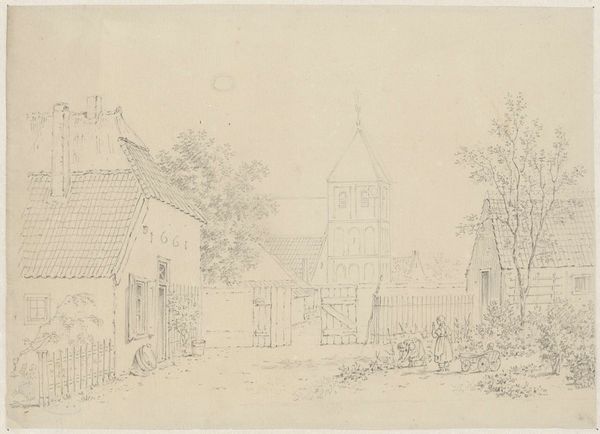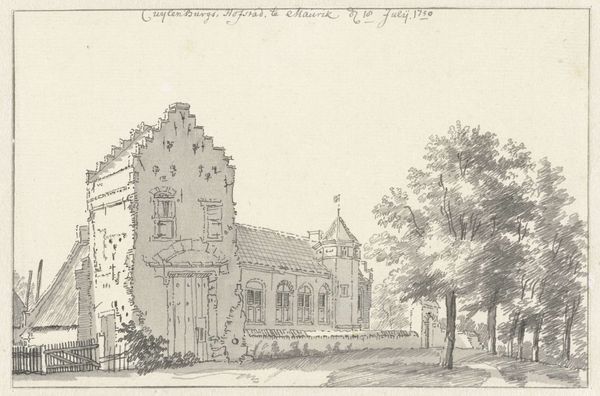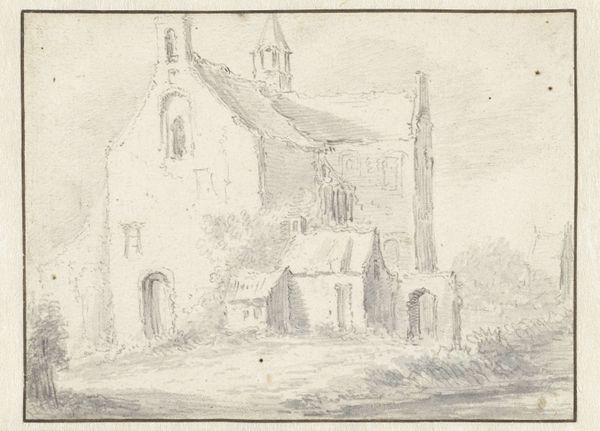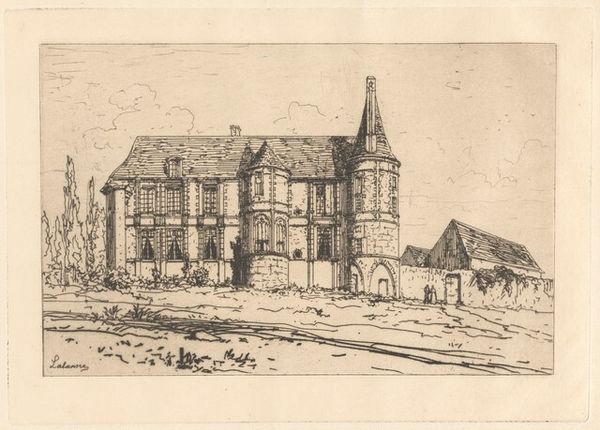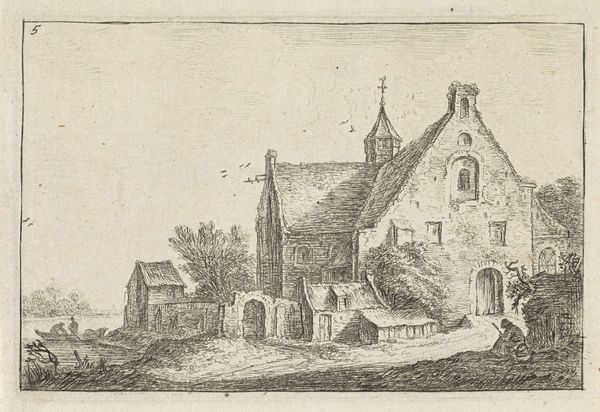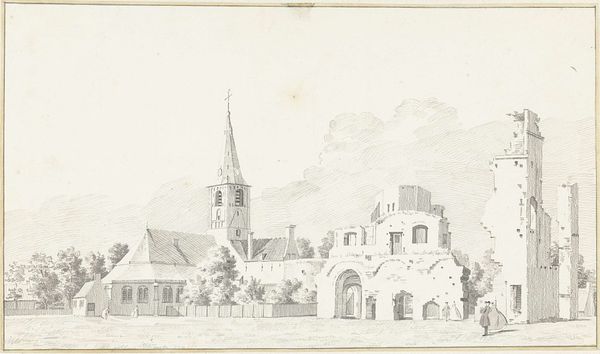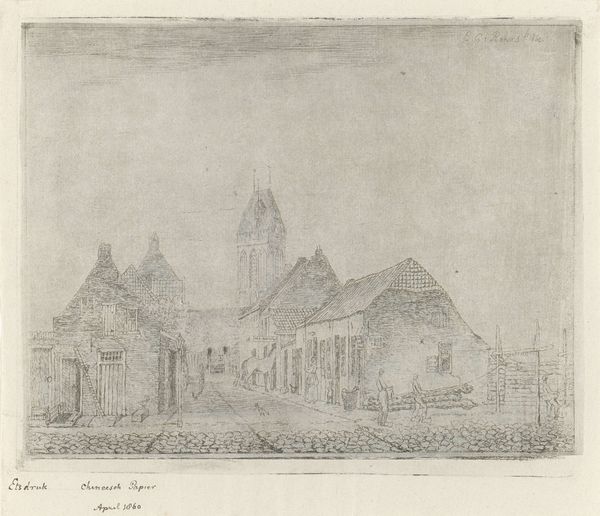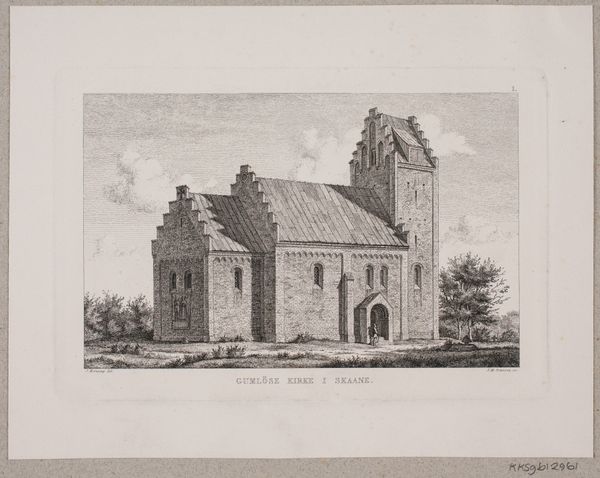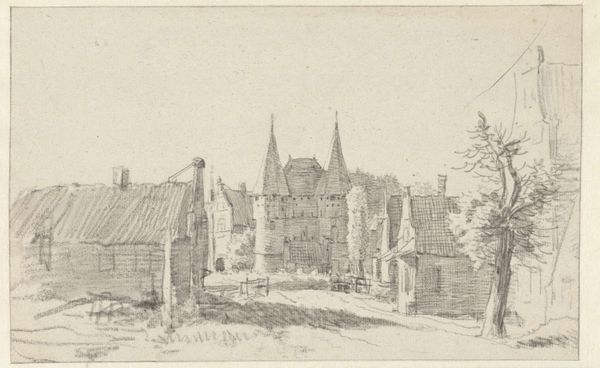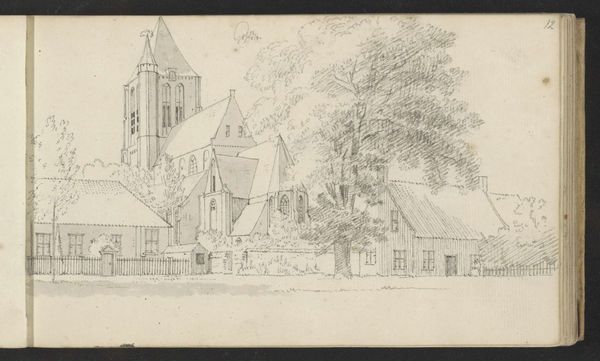
#
architectural sketch
#
quirky sketch
#
mechanical pen drawing
#
pen sketch
#
old engraving style
#
personal sketchbook
#
sketchwork
#
pen-ink sketch
#
pen work
#
sketchbook drawing
Dimensions: height 131 mm, width 198 mm
Copyright: Rijks Museum: Open Domain
This drawing of a church was made by Pieter de Goeje, sometime in the first half of the 19th century. De Goeje used etching, a printmaking technique that relies on the corrosive action of acid. The artist would have begun by coating a metal plate with a waxy, acid-resistant layer, then scratched an image into that layer with a sharp needle, exposing the metal beneath. The plate was then immersed in acid, which bit into the exposed lines. This process could be repeated to achieve darker lines and finer details. The resulting image, built from countless tiny strokes, has an atmospheric quality. You can almost feel the weight of the stone in the church itself. It is an evocative demonstration of the power of an industrial technique to capture the essence of a more venerable, pre-industrial craft: the construction of buildings meant to last for eternity. Seeing art through the lens of its making helps us appreciate the artistry involved, and also connect it to the broader world of labor and production.
Comments
No comments
Be the first to comment and join the conversation on the ultimate creative platform.


